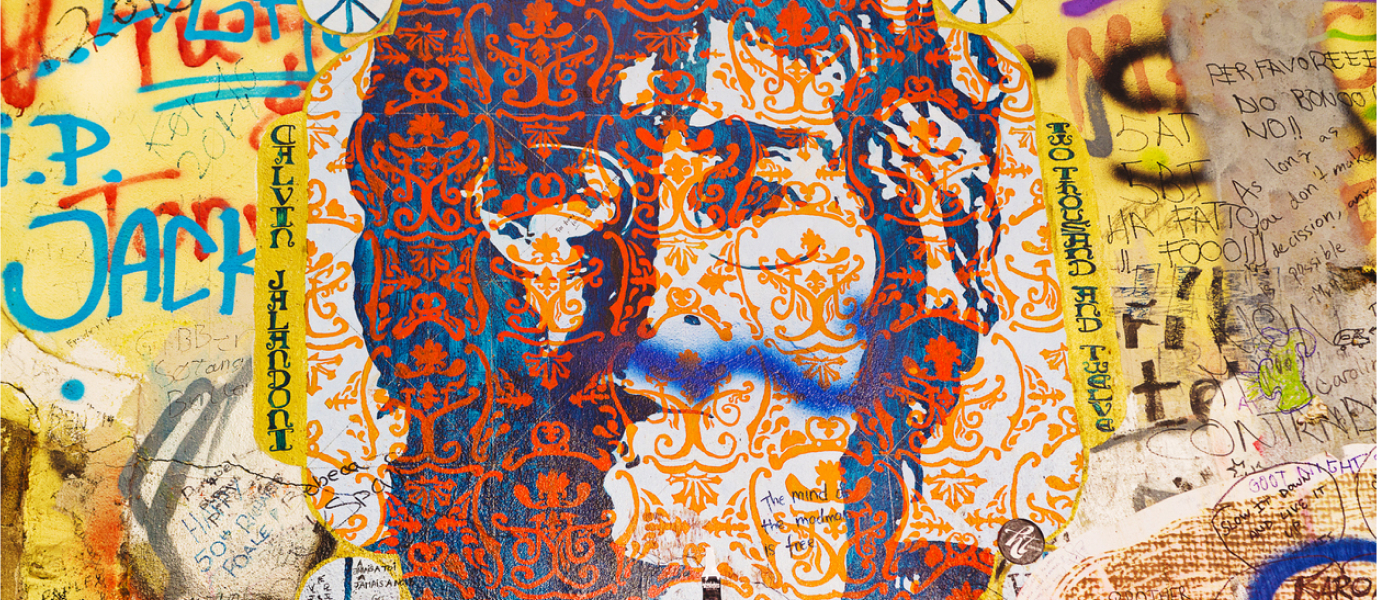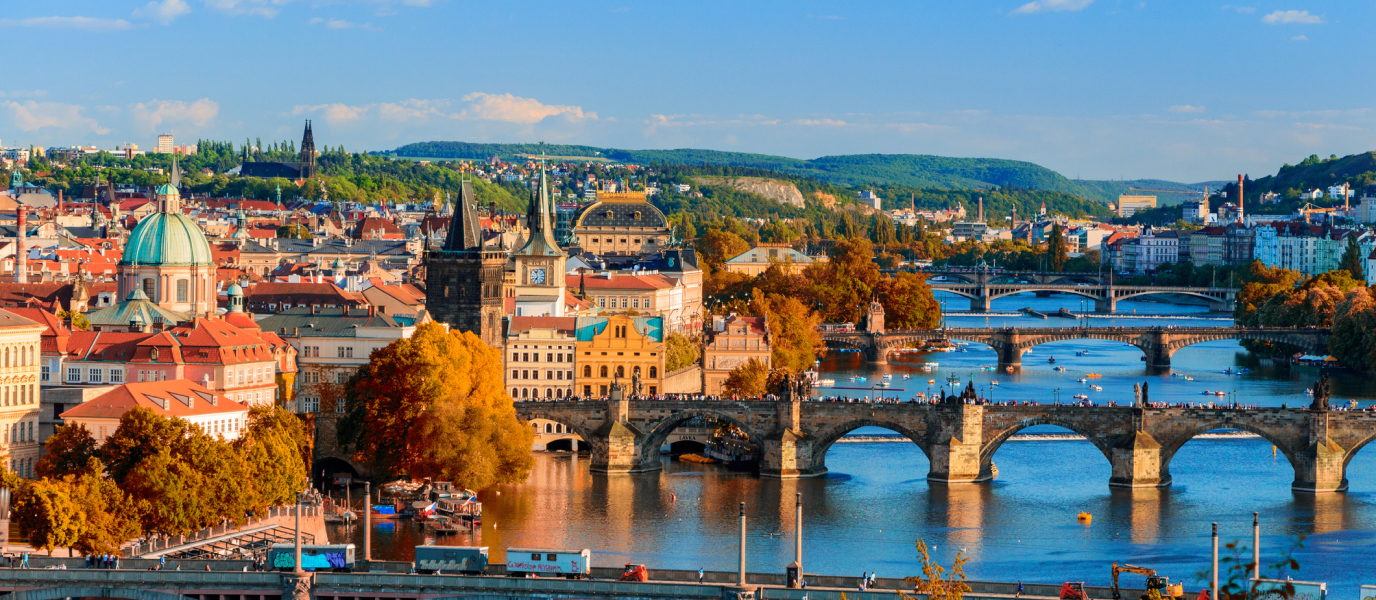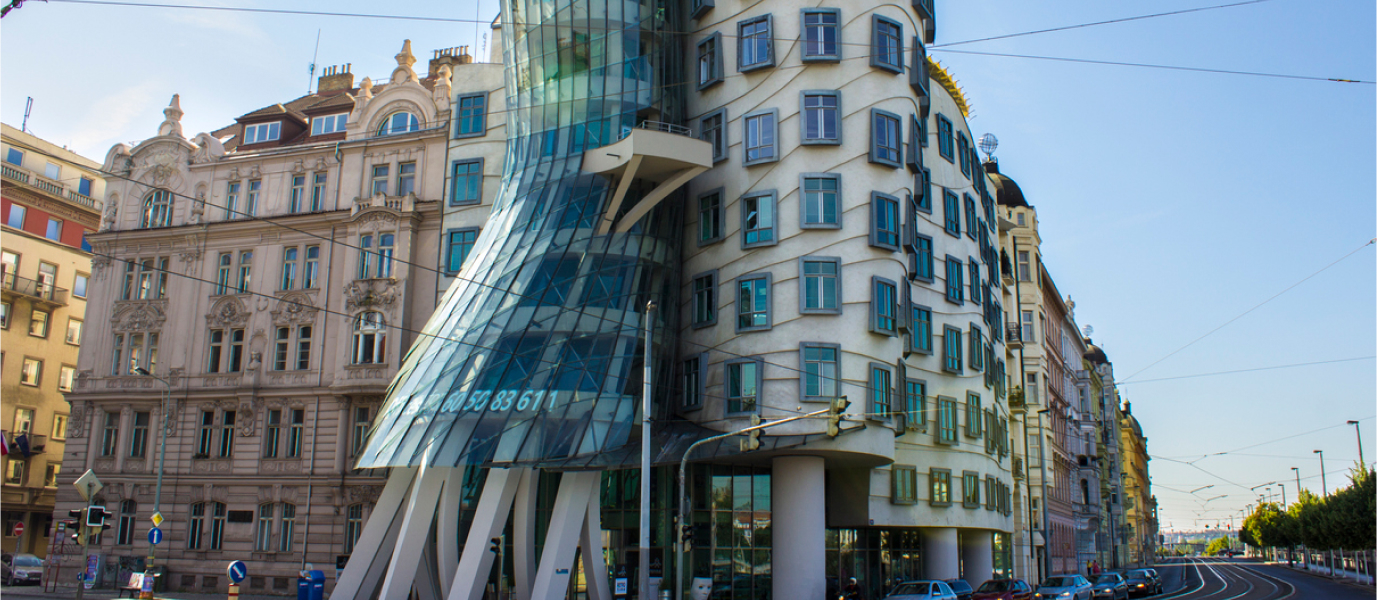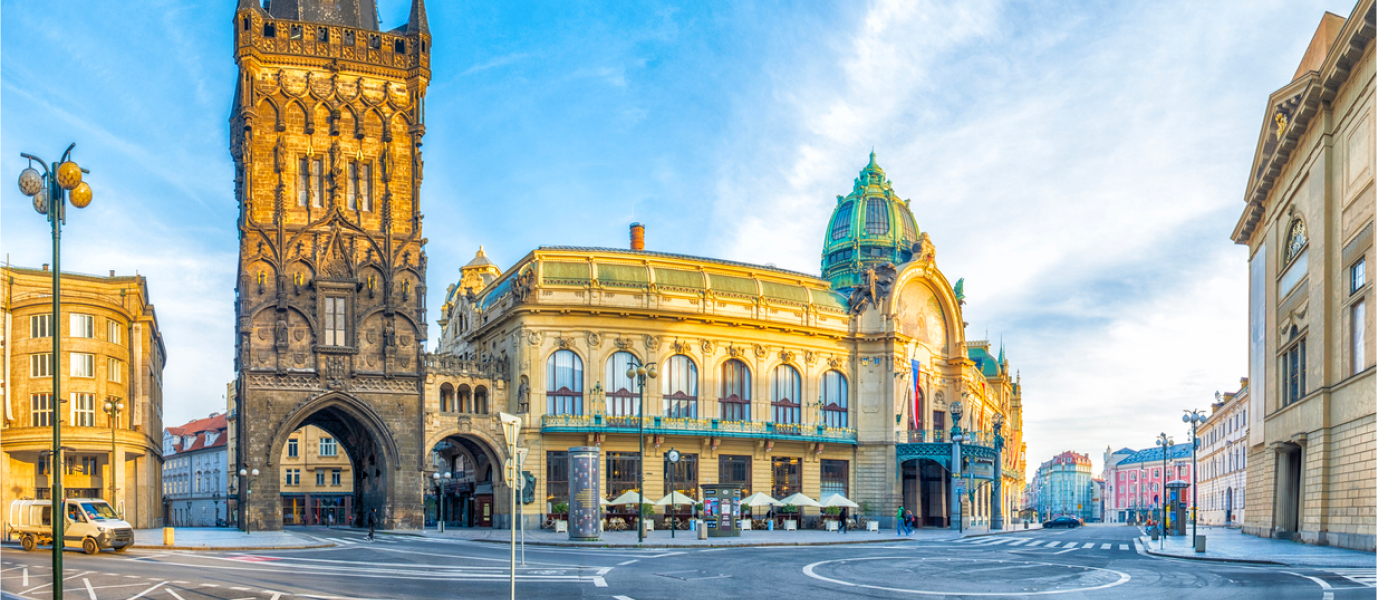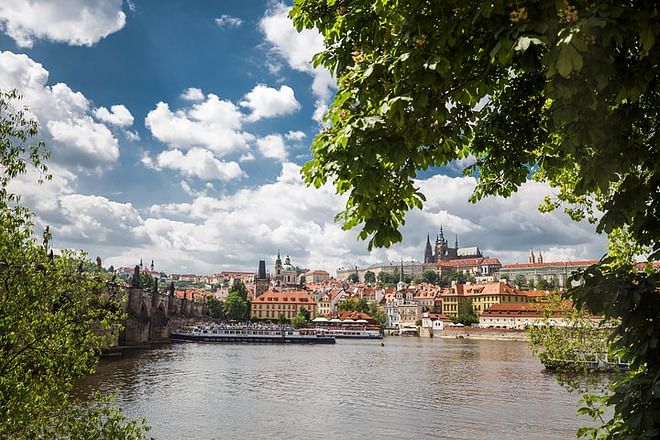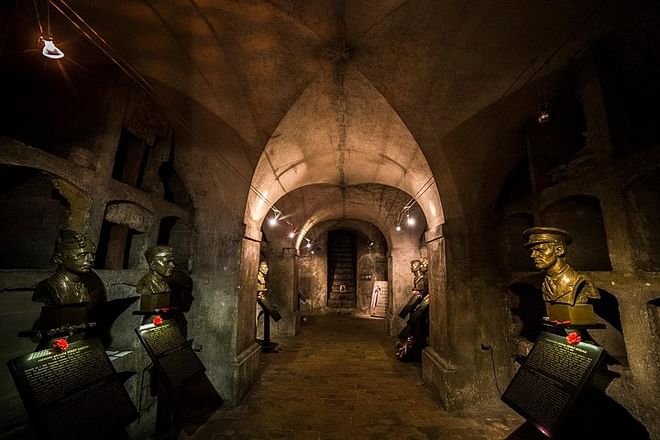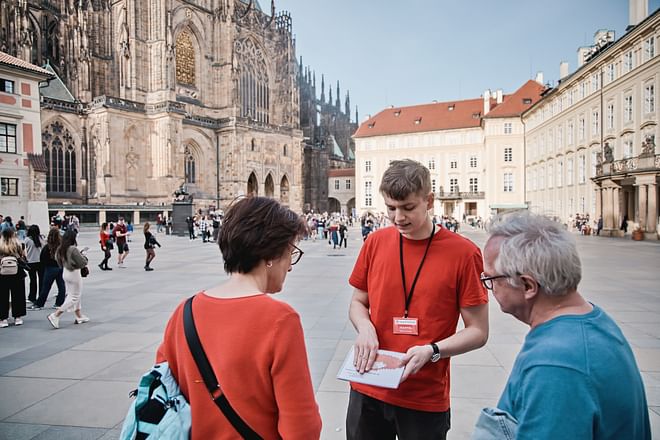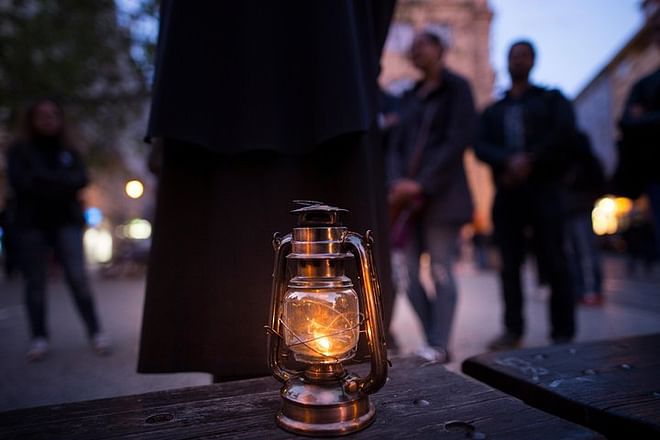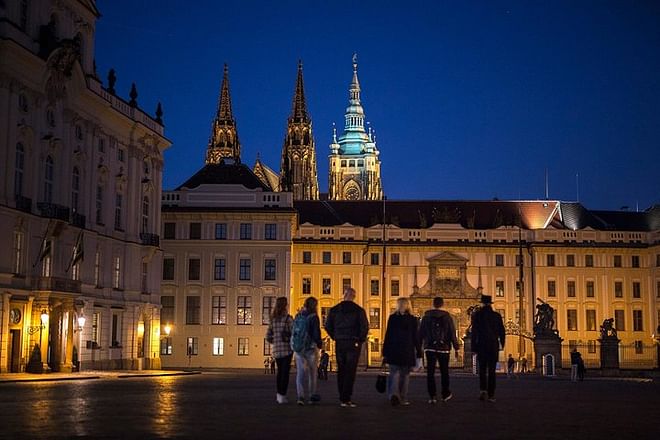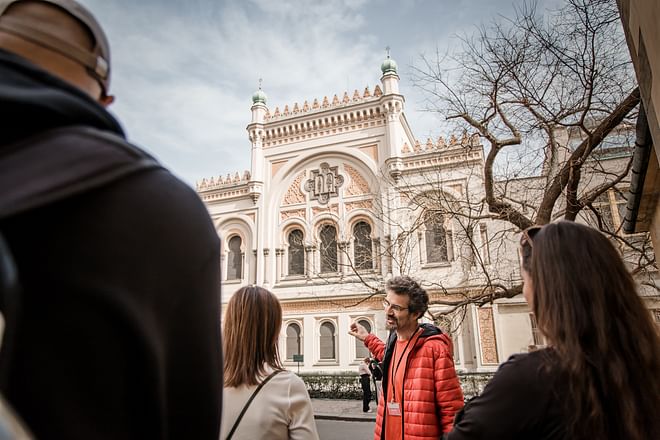John Lennon never visited Prague. However, one of the most photographed places in the Czech capital is the John Lennon Wall. Why was this popular, graffiti-covered wall named after a musician who never actually came to the city? Why is there a John Lennon Wall in Prague? Read on for the answers to these questions and more facts about this unusual and revered place.
John Lennon, legendary member of Liverpudlian band The Beatles and one of the all-time greats of music, has been a symbol of the pacifist movement since the 1970s. His untimely death only made his image stronger during the tumultuous Cold War period. And Prague, as the capital of what was formerly Czechoslovakia, was no exception.
John Lennon Wall in Prague
The John Lennon Wall is nothing other than a city wall decorated with continuously updated graffiti. It is not under any special protection and is essentially a wall for free expression inspired by the figure of Lennon.
It all began with the death of the former Beatle, who was murdered in 1980 at the entrance to the Dakota building in New York. The entire world was moved by this tragic event and a portrait of the musician appeared on this remote wall in Prague along with various slogans criticising the government.
Lennon had always been seen as a symbol of the peace movement and this was also true in Central and Eastern Europe where the communist regime even banned the British musician’s music and that of many other Western artists. Paying tribute to freedom was not popular with the regime, not even in Czechoslovakia which was then under the authoritarian rule of Gustáv Husák.
Despite being painted over by the authorities, the graffiti soon reappeared. This continued repeatedly from 1980 onwards, with messages and pacifist drawings that were a source of irritation for the government. Messages included song lyrics by Lennon himself and The Beatles and also inspirational and activist slogans promoting world peace. Young Czechs began to experience an awakening and found their own personal placard in the wall.
So the wall became the Lennon Wall in the 1980s, a true memorial to the musician’s legacy and a place where people could write slogans supporting peace, the environment and solidarity.
Today, anyone can leave their mark or message on this unusual wall.
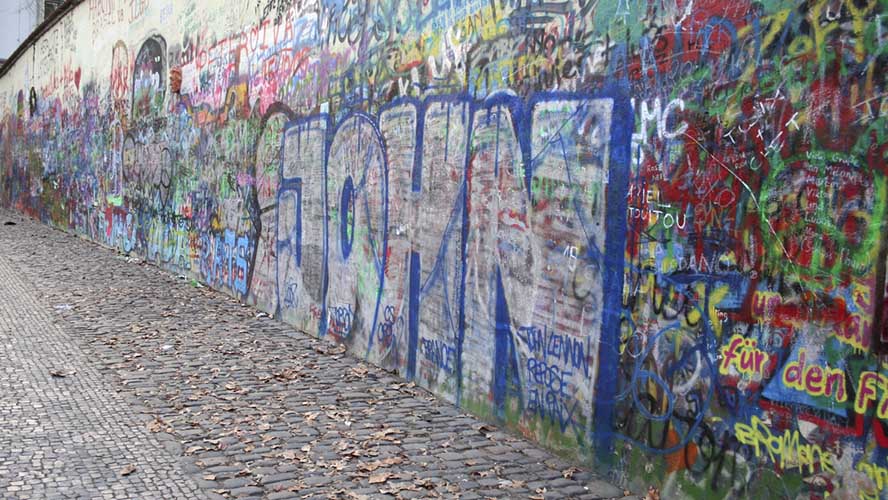
A wall full of life
Like any other graffiti-covered wall, the John Lennon Wall continues its own story with new paintings, quotes and artistic expressions of every kind. And precisely because it is a place where people can express themselves freely, it has also been used by groups hoping to draw attention to themselves.
In 2014, during the 25th anniversary of the Velvet Revolution, a group of art students painted the wall white with just the slogan “Wall is over”; this act almost led to a criminal complaint being filed.
On 22 April 2019, Earth Day, ecological group Extinction Rebellion painted the wall with slogans about climate change, including a large skull.
Where is the John Lennon Wall?
The John Lennon Wall is in Malá Strana, Prague’s Bohemian neighbourhood located to the west of the Vltava river. As you cross Charles Bridge from the Old Town, narrow streets on the left-hand side lead to a small interior square which is where you’ll find the wall, opposite the Buquoy palace, home to the French Embassy.
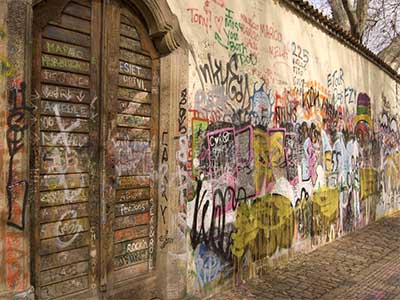
The exact street where the wall is located is Velkopřevorské Náměstí. The Lennon Wall is part of the wall that surrounds the Maltese gardens and it belongs to the Czech Grand Priory of the Order of the Knights of Malta, who also own the nearby church of Our Lady Under the Chain (Kostel Panny Marie pod řetězem). The strange name of the temple pays tribute to the chain that hung from the old Judith Bridge which stopped boats from using the river without paying taxes.
Round off your visit to the Lennon Wall by dropping into the nearby John Lennon Pub (Hroznová 495/6)—all the decoration here is linked to the artist from Liverpool and other British icons. It also has a lovely interior garden and serves typical English pub food.
Kampa Island
Kampa Island is very close to the Lennon Wall but is hard to spot from the street. You need to look out for the water canal that you’ll see after crossing the river, close to the Charles Bridge exit. The Čertovka Canal or Devil’s Canal, runs off the Vltava river and rejoins it several hundreds of metres downstream, creating a small artificial island. It is a lovely, peaceful spot that can easily be missed by visitors.
The canal is still home to several old water mills that are a reminder of the vegetable gardens that once existed in this area. The most famous is the Grand Priory Water Mill, which is 8 metres in diameter. Over time, nobles moved here who were linked to the castle, located in the upper part of Malá Strana, and they left behind a significant part of the stately legacy that can be admired today.
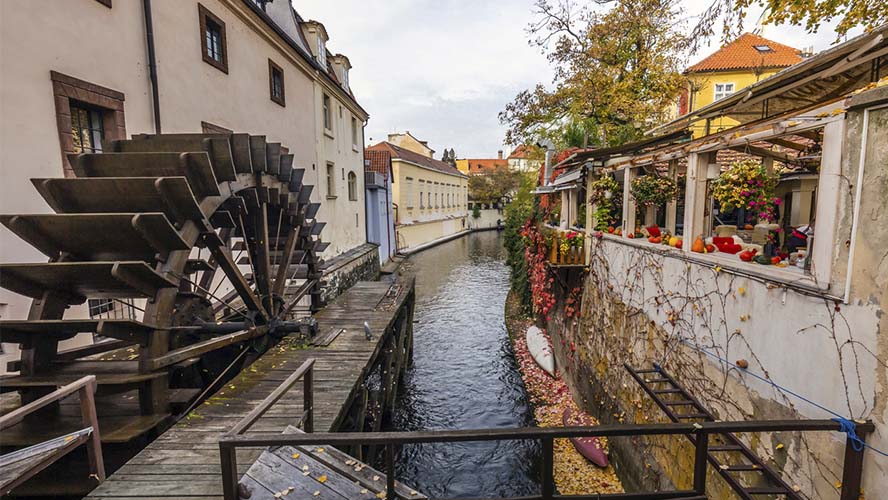
Kampa Island is also home to the Franz Kafka Museum, which has numerous personal objects that belonged to the Bohemian writer, Lovers’ Bridge—famous for its countless padlocks—and Vinárna Čertovka, the narrowest street in Prague (and perhaps the world) at just 50 cm wide—it has a pedestrian traffic light that controls the right of way.
As unremarkable as a graffiti-covered wall might seem at first, the John Lennon Wall in Prague is a symbol of the city and there is definitely room here for all types of artistic expression. But, in addition, the true value of the wall lies in the message that it has relayed since the times of the Communist dictatorship to the present day. Its objective remains the same: to appeal to people’s moral sense, just as legend John Lennon hoped to do with his music.
Discover more places and the Czech capital’s history in our Prague guide.




































































